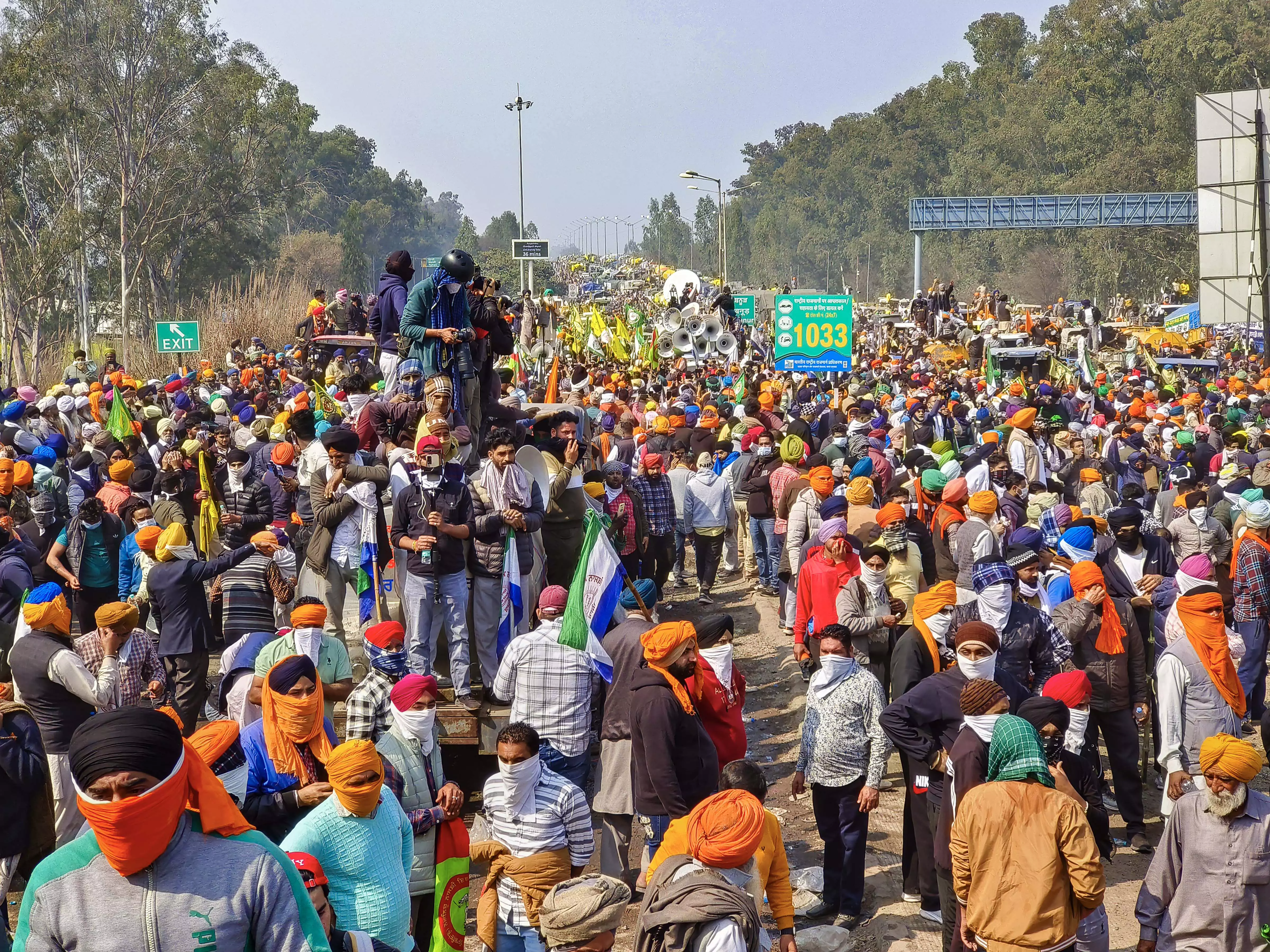DC Edit | Govt needs to show empathy in tackling farmers protests

The capital New Delhi has been ring-fenced by the police as they face a stir by groups of Punjab farmers. The farmers’ march to the capital — marking the farmers’ stir 2.0 after year-long events of the agitation over three contentious farm laws ended when the Centre dropped them in November 2021 — has paralysed movement in New Delhi.
The events over the first two days of a fresh demonstration of the farmers’ general unhappiness over their lot have featured disproportionate responses from riot police forces who seem not only to have prepared to keep the farmers and their ubiquitous tractors out of New Delhi at any cost but also fired teargas shells, some launched from drones, at columns of demonstrators trying to breach the barricades, especially on the Shambhu border between Punjab and Haryana.
While talks have been ongoing despite the failure to reach any kind of agreement to take negotiations further in the first round, the government may have learnt its lessons from the major “Delhi Chalo” stir of 2020 that the way to handle the issue is to seek a consensus with the agitating farmers and prepare to seriously look at issues for ways to mitigate their plight.
It might seem incongruous that the farmers of Punjab are the initiators of this round of protests as they are better off than their counterparts in many other states. They have free power and generous allotments of subsidised fertiliser, besides copious water for irrigation. Their productivity levels are high, particularly in wheat and rice crops and they have reasonable access to grain procurement by the government through the Minimum Support Price system.
There is, however, no imagining that things are perfect for them as farmers, besides a hard life to feed the nation, face real income issues from free market and MSP prices that are not remunerative enough while hazards like climate change rendering rainfall patterns erratic are making their livelihoods even more unpredictable.
The idea would be to discuss their issues threadbare and work out what best can be done, though capitulating to the demand for a law to make MSP compulsory might prove disruptive and counterproductive while leading to uncontrollable food price inflation.
That was one reason why the UPA-2 government in 2010 and the NDA governments since 2014 have refused to contemplate the accepting of the Swaminathan committee report which recommended raising MSP to at least 50 per cent more than the weighted average cost of production.
Farmers in France and Germany have also been up in arms over their lot, which means the Indian farmer’s agitated state of mind is not unique. But in an economy in which nearly half the people of 140 crore population are dependent on agriculture, the need to look at how best to support them better must be worked out.
Protecting the capital from protesting and camping farmers cannot be the sole objective of tackling this second round of protests. Considering this is election season, opportunistic Opposition parties, none of which had conceded such demands in their states nor when in power at the Centre, are promising the moon in an MSP law, if they are elected to power.
The route out may seem extremely complicated for the ruling party, but a method by which the MSP is raised for basic grains like wheat and rice that buttress the free ration scheme for 80 crore people can be worked out to bring some relief to those who sweat and toil to till the soil.

